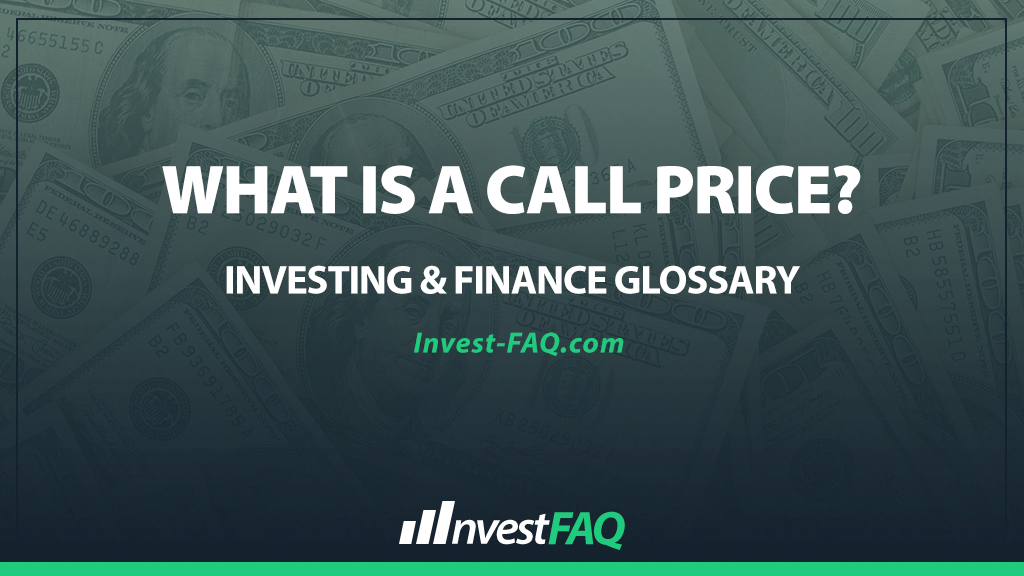
Call Price
Contents
A call price is the price at which a bond or other financial security can be redeemed by the issuer before its maturity date. This predetermined price is often set at a premium above the bond’s face value to compensate investors for the early termination of their investment and the potential loss of future interest payments.
Businesses use the call feature in bond issues as a strategic financial management tool. It allows them to refinance debt in periods of falling interest rates by redeeming existing bonds at the call price and issuing new bonds at a lower rate. This flexibility can lead to significant interest expense savings over time.
However, for investors, the call feature introduces reinvestment risk, as the bonds they hold may be redeemed before maturity, potentially at times when reinvesting their capital could yield lower returns.
Example of a Call Price
Consider “Global Infrastructure Ltd.,” which has issued bonds with a face value of $1,000,000, carrying an annual interest rate of 5% and a maturity of 10 years. The bonds include a call feature with a call price set at 102% of the face value, meaning the issuer can redeem them at $1,020,000 before maturity.
Initial Bond Issuance: The bond issuance is recorded as increasing cash and long-term liabilities by $1,000,000.
Annual Interest Payments: Global Infrastructure Ltd. records an annual interest expense of $50,000, which is 5% of the face value.
Bond Redemption: If the company decides to exercise the call option three years into the bond term, it must pay investors the call price of $1,020,000.
By redeeming the bonds early at the call price, Global Infrastructure Ltd. aims to take advantage of lower prevailing interest rates by issuing new bonds at a reduced cost.
The accounting treatment for this early redemption includes removing the bond liability from the balance sheet and recognizing an expense of $20,000 above the face value (the premium paid for early redemption).
This transaction demonstrates the company’s strategy to manage its long-term debt obligations efficiently and reduce future interest expenses.
Significance for Investing & Finance
The concept of a call price is significant in accounting for several reasons:
Debt Management: It allows issuers to manage their debt obligations proactively by refinancing under more favorable terms.
Interest Expense Savings: The strategic use of call features can lead to substantial savings on interest expenses, improving the company’s financial performance.
Investor Relations: While call features can benefit issuers, they also require careful communication with investors, who may be affected by early redemption, especially in a low-interest-rate environment.
Financial Reporting: Proper accounting for the redemption of callable bonds, including the payment of the call price, is essential for accurate financial reporting and compliance with accounting standards.
In summary, the call price is a critical element of callable bonds, offering issuers the flexibility to manage their debt efficiently. From an accounting perspective, understanding and accurately recording transactions related to the call price are essential for reflecting the company’s financial position and for strategic financial management.
FAQ
How is the call price of a bond typically determined at issuance?
The call price of a bond is typically determined at issuance based on the bond’s terms, often set at a premium above the bond’s face value to compensate investors for the early redemption risk, and reflects the issuer’s anticipation of future interest rate environments and refinancing needs.
Does the call price change over the life of the bond?
While the call price is generally fixed and stated in the bond’s indenture at issuance, some bonds feature a declining call price schedule, where the price decreases over time, making it cheaper for the issuer to redeem the bond as it nears maturity.
What factors influence a company’s decision to redeem bonds at the call price before maturity?
A company’s decision to redeem bonds at the call price before maturity is influenced by factors such as changes in interest rates (with lower rates motivating refinancing to reduce interest expenses), improvements in the company’s credit rating, or strategic financial management considerations to optimize the capital structure.
How do investors assess the risk associated with the call price when purchasing callable bonds?
Investors assess the risk associated with the call price by considering the bond’s yield to call versus its yield to maturity, the likelihood of the issuer exercising the call option based on current and projected interest rates, and the premium paid over the face value, which compensates for the reinvestment risk should the bond be called early.
